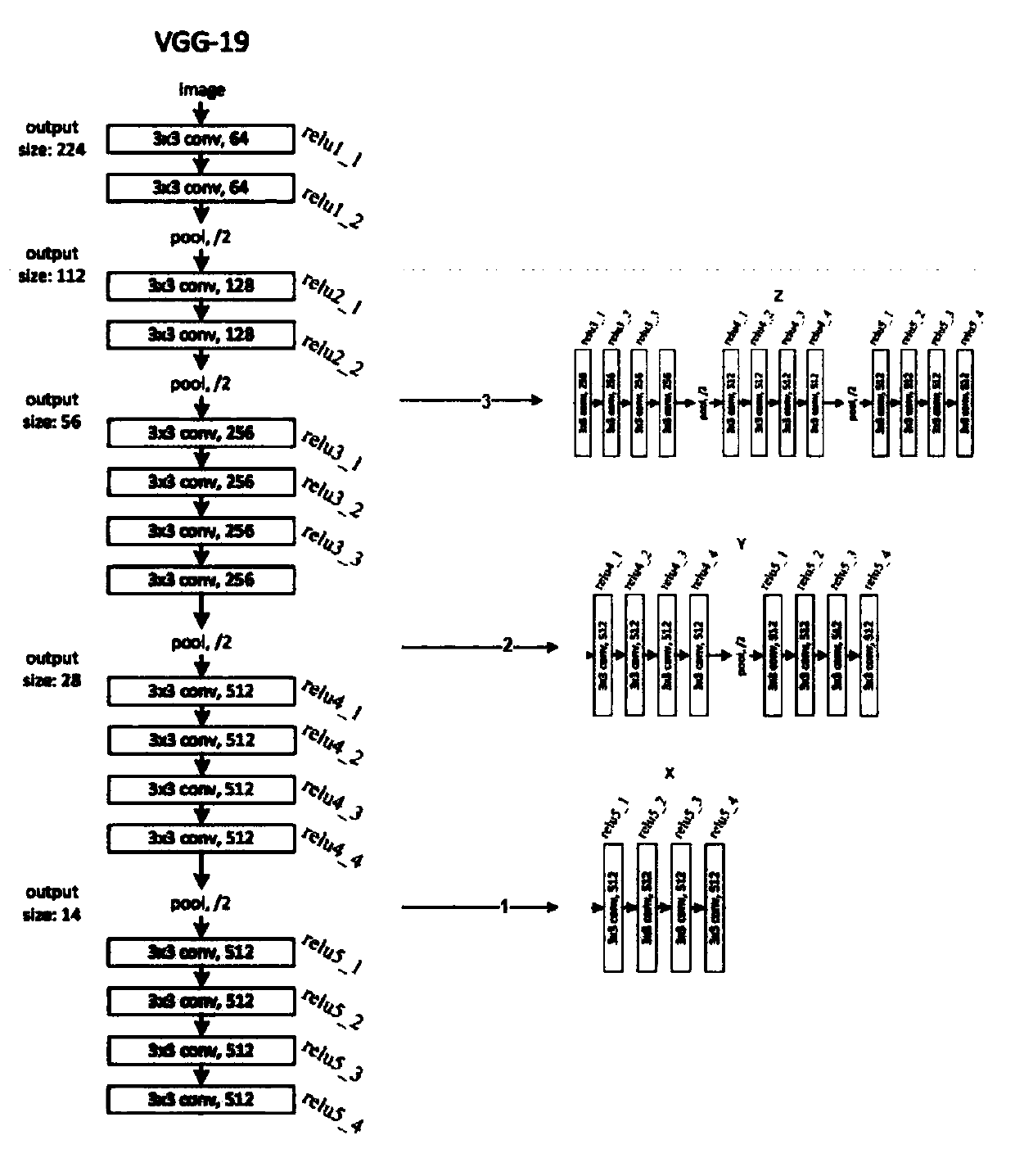Method for calculating coronary artery calcification ratio based on end-to-end reasoning of convolutional neural network
A convolutional neural network, coronary artery technology, applied in the field of medical image processing
- Summary
- Abstract
- Description
- Claims
- Application Information
AI Technical Summary
Problems solved by technology
Method used
Image
Examples
Embodiment 1
[0038]An embodiment of the present invention provides a method for end-to-end reasoning calculation of coronary artery calcification ratio based on convolutional neural network, which is characterized in that the method includes: Step 1: Determine the CT image group to be input, and the CT image group represents the patient After completing all the image information of the CT examination, normalize the CT image group to reduce the difference between the images; Step 2: Then divide the CT image group into squares with a size of 64*64*64 3D image, and there is a label above each grid 3D image, each grid 3D image has position information, and the label includes five types of labels; Step 3: the grid 3D image with the first type of label The information is input into the 3D convolutional neural network to extract abstract features. After the first fully connected layer, the neural network training of whether the square 3D image is a heart is carried out. The neural network training...
Embodiment 2
[0055] According to an embodiment of the present invention, the present invention provides a device for end-to-end reasoning calculation of coronary artery calcification ratio based on convolutional neural network, including: a memory, a processor, and stored in the memory and can be stored on the processor A running computer program, when the computer program is executed by the processor, the steps of the method for calculating the coronary artery calcification ratio based on convolutional neural network end-to-end reasoning as described in the first embodiment above are realized.
Embodiment 3
[0057] According to an embodiment of the present invention, the present invention provides a computer-readable storage medium, and the computer-readable storage medium stores a program for implementing information transmission, and when the program is executed by a processor, the above-mentioned embodiment 1 is implemented. Steps in a method for computing coronary artery calcium ratios based on convolutional neural network end-to-end inference.
[0058] Through the above descriptions about the implementation manners, those skilled in the art can clearly understand that the present application can be realized by software and necessary general-purpose hardware, and of course it can also be realized by hardware. Based on this understanding, the essence of the technical solution of this application or the part that contributes to related technologies can be embodied in the form of software products, and the computer software products can be stored in computer-readable storage media...
PUM
 Login to View More
Login to View More Abstract
Description
Claims
Application Information
 Login to View More
Login to View More - R&D
- Intellectual Property
- Life Sciences
- Materials
- Tech Scout
- Unparalleled Data Quality
- Higher Quality Content
- 60% Fewer Hallucinations
Browse by: Latest US Patents, China's latest patents, Technical Efficacy Thesaurus, Application Domain, Technology Topic, Popular Technical Reports.
© 2025 PatSnap. All rights reserved.Legal|Privacy policy|Modern Slavery Act Transparency Statement|Sitemap|About US| Contact US: help@patsnap.com



